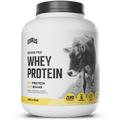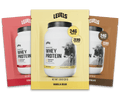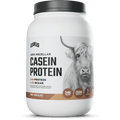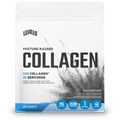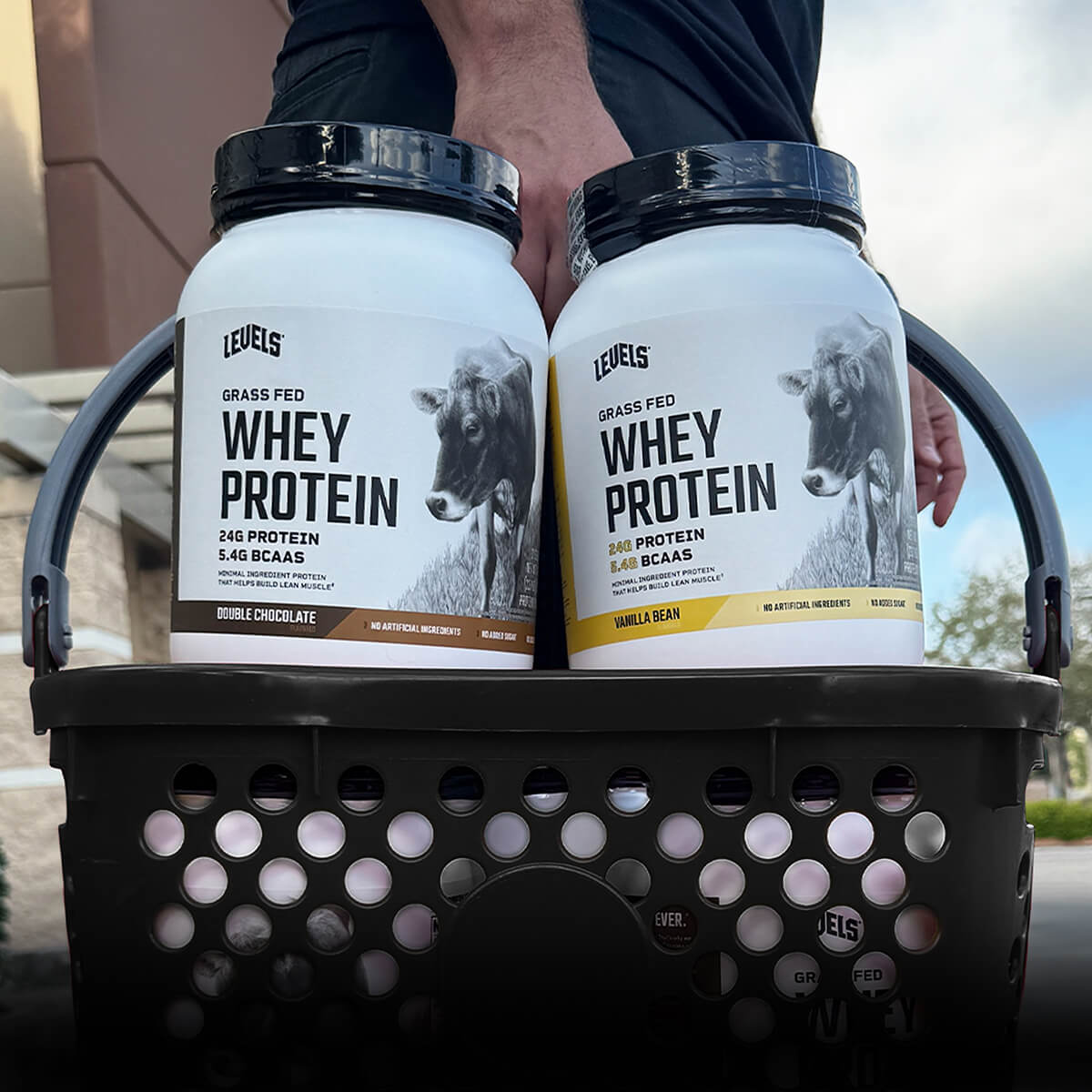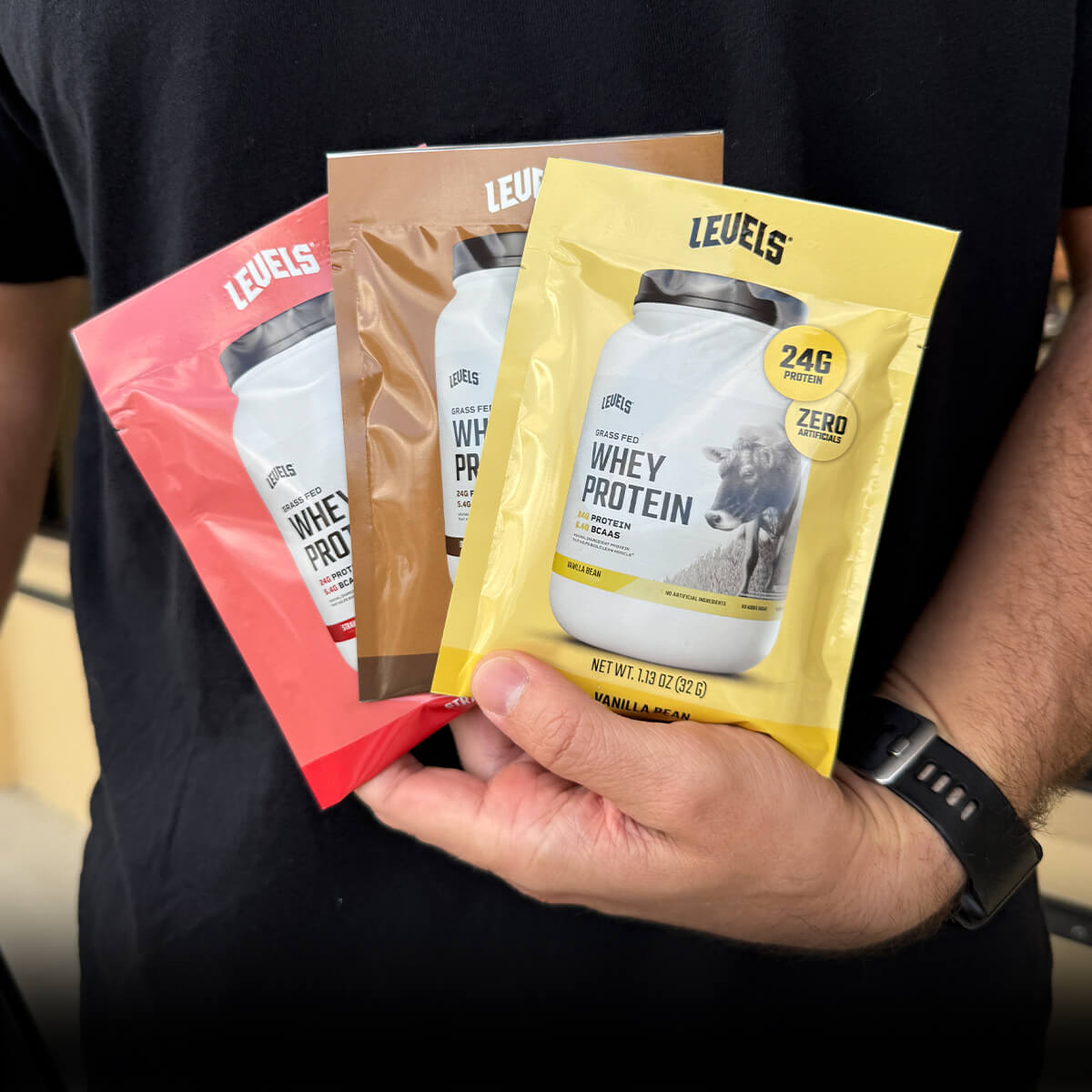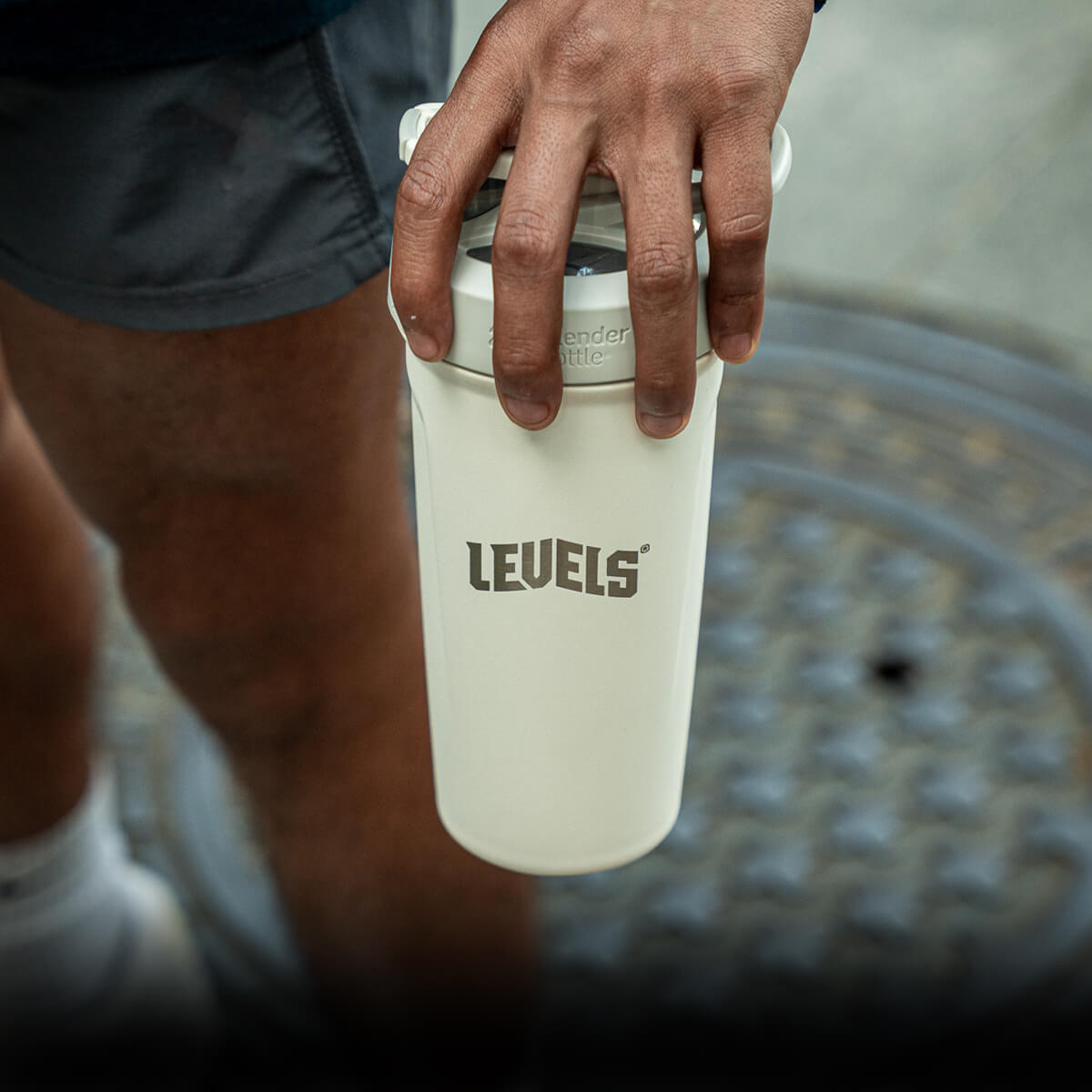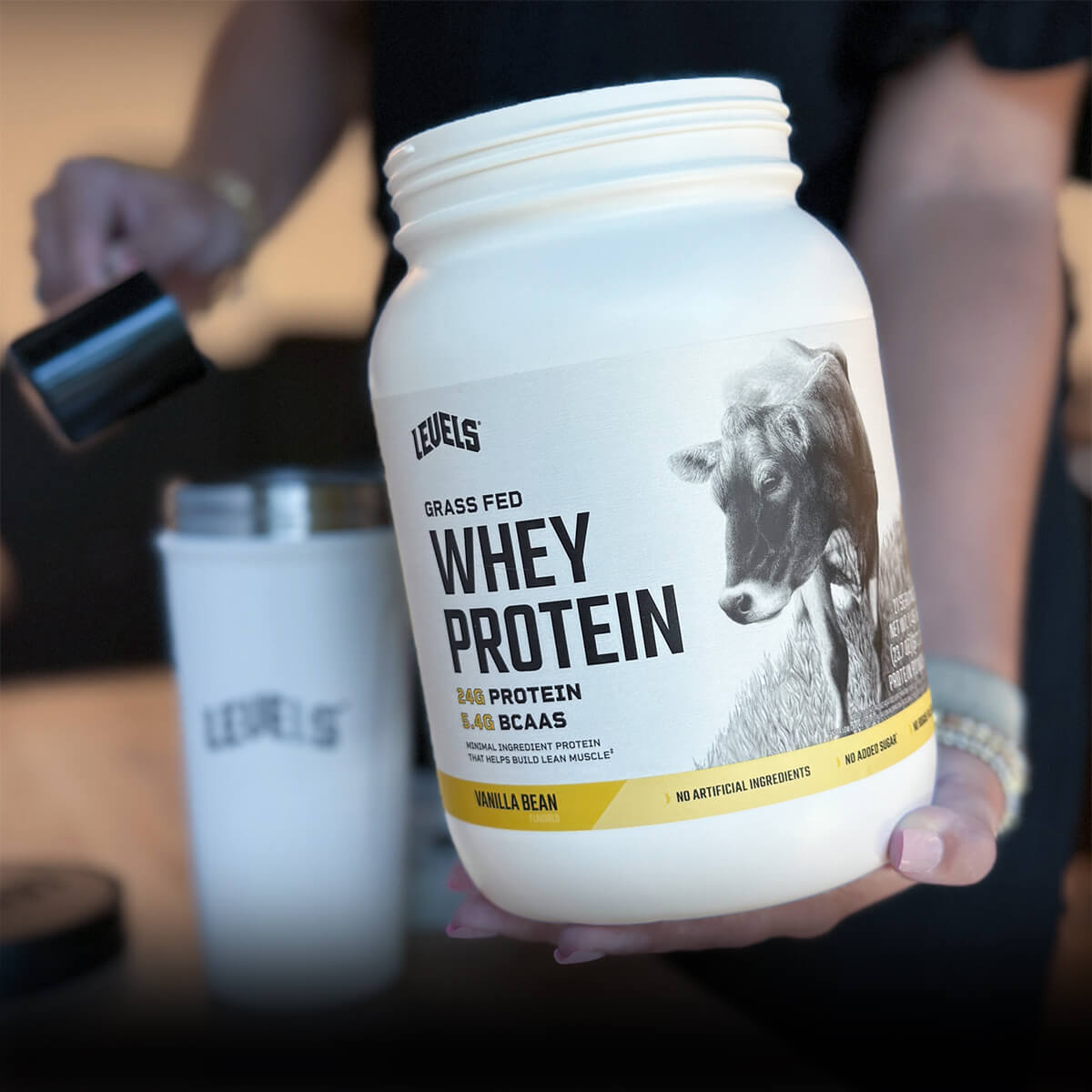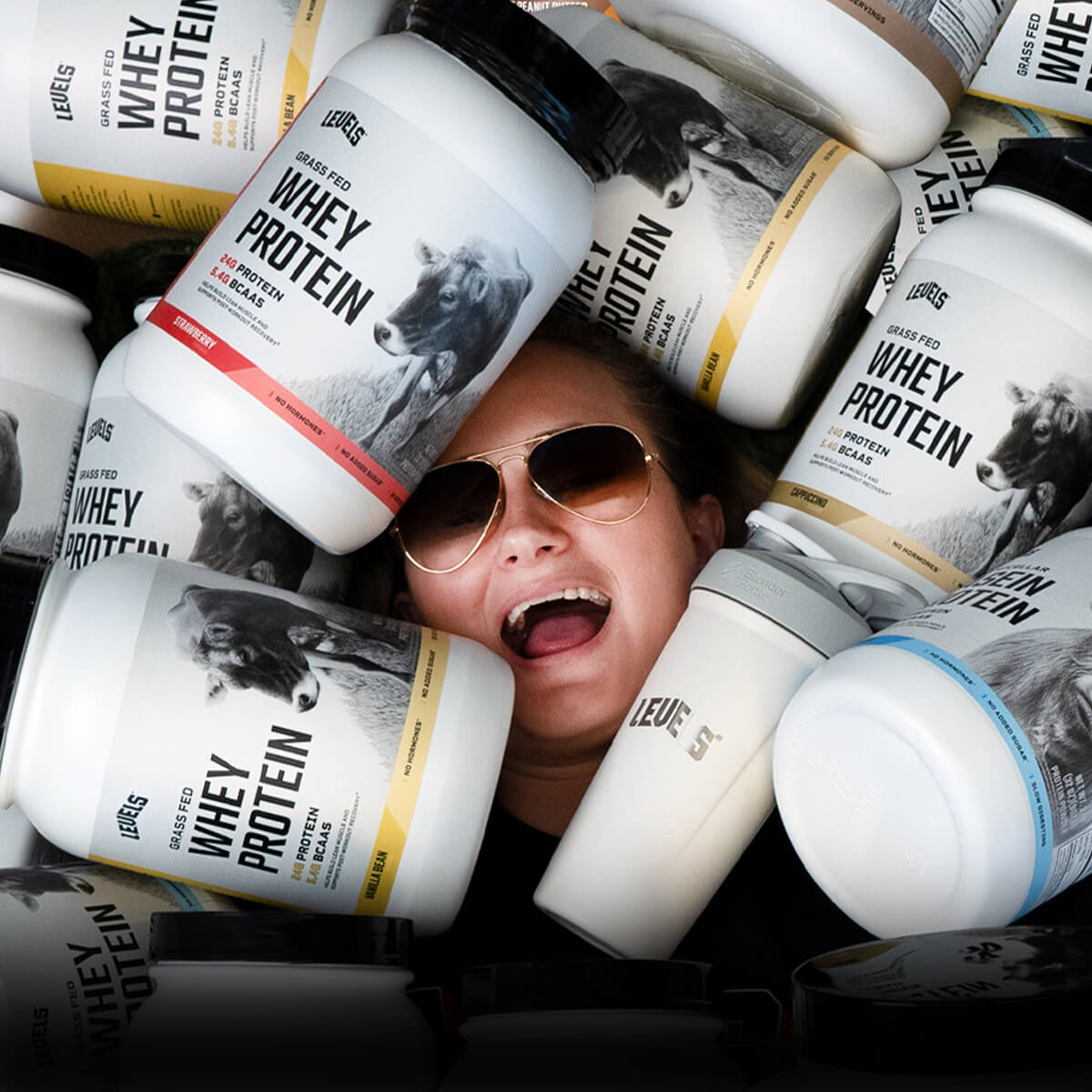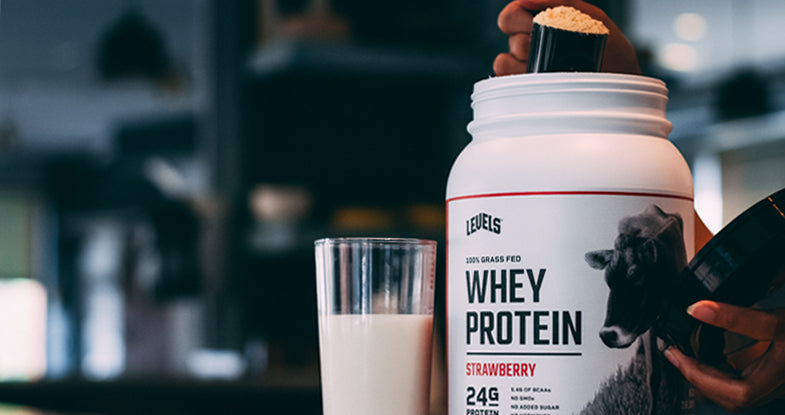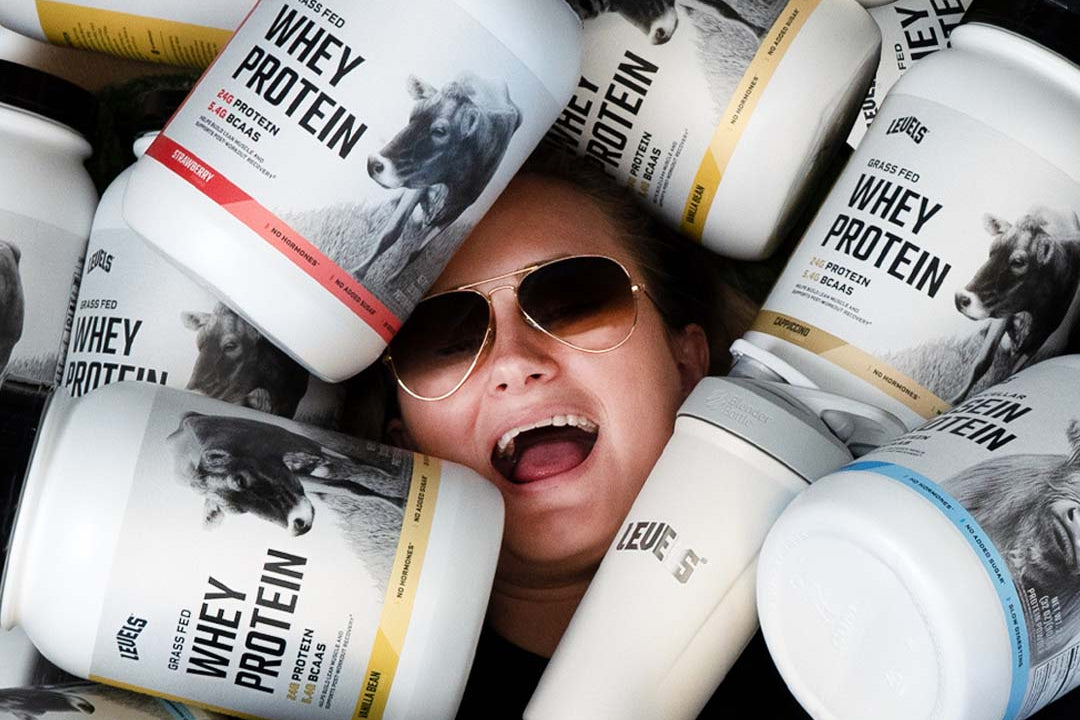When it comes to certain nutrition questions, there’s no one-size-fits-all answer.
But if you’re trying to figure out the right number of protein shakes you should drink each day to reach your goals, we’ve got you covered in this article with a blend of science, logic, and experience.
Keep reading to solve the protein intake puzzle, plus three common protein intake mistakes you definitely want to avoid.
What are Protein Shakes?
Protein shakes contain protein powder and a liquid (usually water), and sometimes other ingredients. You can buy premade shakes, but most people blend their own.
The best methods to blend a protein shake include using a full-sized blender, compact blender, or shaker bottle. Blenders also allow you to easily add healthy fats and whole foods to amp up the nutritional value of your shakes.
The worst ways to mix protein are shaking it in a jar, stirring it with a spoon, or eating it without any water (yes, this is something that we have actually seen!).
It may sound basic, but why do people drink protein shakes or use protein powder? Why take protein shakes in the first place?
People typically drink them for convenience or as a supplement to enhance their exercise results.
Research shows that whey protein, in particular, can help you add lean muscle or boost your exercise recovery[*][*].
The Scoop on Whey Protein Nutrition
The nutrition facts of whey protein can vary based on the manufacturer, the source (organic grass-fed milk vs. conventional grain-fed cheese for example), and whether it is a concentrate or isolate.
Protein has 4 calories (kcal) per gram, so most protein powders contain 120 calories or less per 30 gram scoop or serving.
A smaller scoop size or a lot of filler ingredients could mean fewer calories, whereas some added fat (like MCT oil) might boost the calorie count to 130 calories or so.
For the best value and flavor, a product with minimal fillers, preservatives, and additives is best. In other words, the fewer ingredients on the label the better, because you’ll get more protein and less junk.
As a rule of thumb, pay attention to scoop size, and don’t buy a protein powder that has less than 20 grams of protein per 30 gram scoop.
The higher the protein amount per serving the better, particularly with whey isolate.
Whey concentrate, on the other hand, has less protein per serving when compared to isolate but contains more active compounds that may improve its properties[*].
How Many Protein Shakes Should You Add to Your Diet?
If you’re using protein shakes as a convenient meal replacement, or to meet your daily protein macro goal, you can consume them any time you’d normally eat a meal.
Of course, you’ll need to add other macros in the form of healthy fats (like oil, nuts, or avocado) or carbs (such as your favorite fruit) for meal replacement purposes.

Or if you aren’t following a precise macronutrient ratio, just add any healthy and filling ingredients that you enjoy.
In contrast, using protein shakes to reach your goals will naturally depend on the nature of those goals.
Using Protein Shakes To Lose Weight
First of all, protein shakes are not a weight loss supplement. In other words, if you aren’t losing weight currently, simply adding shakes isn’t going to cause instant weight loss.
But they can serve three useful purposes during fat loss:
- Helps reduce your appetite or take the place of unhealthy foods[*][*]
- Boosts your metabolic rate through the thermic effect of food (TEF)[*]
- Enables you to retain more lean mass (especially paired with strength training)[*]
Some studies also show dramatically better weight loss results when people eat at least 25-30% of their calories from protein[*][*].
Therefore, if you eat 2,000 calories per day, you might get better fat loss results by consuming at least 125-150 grams of protein every day. One or more shakes each day is an easy way to hit that target.
A protein shake at breakfast could give you a head start on getting enough protein, while a protein shake at night might help you eat fewer calories by filling you up or reducing cravings.
Bottom line: While adding shakes isn’t going to magically make you lose fat without other changes, 1-3 shakes per day is a great way to feel fuller, speed up your metabolism, and help you stay in good shape as you shed pounds.
How to Use Whey Protein to Build Muscle
When paired with weight training, whey protein can help you build more lean muscle, get stronger, and recover faster[*][*].

Studies show that whey protein is more effective than casein (another dairy protein) and other types of protein powder like pea and soy for muscle-building, mainly because it absorbs faster and has the most branch-chain amino acids (BCAAs)[*].
There are three primary ways whey protein can aid your muscle gains:
- Boosting muscle protein synthesis[*]
- Enhancing your recovery speed and training readiness[*]
- Ensuring you hit your daily protein requirements to maximize results[*]
The first two benefits are maximized by consuming a post-workout whey shake.
And you can make sure you hit your daily protein requirement in muscle gain mode by using protein shakes as a meal replacement any time you might miss a meal, or to boost your protein intake along with whole foods.
Here at Levels, we recommend a post-workout protein shake with 40 grams of whey protein or more if your goal is gaining lean muscle.
As for daily protein intake for adding muscle mass, we recommend starting with 25-30% of calories from protein, then going up from there if you feel a need to fine-tune.
Therefore, if you eat 2,500 calories per day, we advise about 160-190 grams of total protein per day to build muscle mass.

Essentially, to build muscle, you could consume as little as a single whey shake on lifting days only (post-workout), or you could have 2-3 every day to ensure you’re getting adequate protein.
3 Protein Intake Mistakes to Avoid
1. Not Eating Enough Whole Foods
Long-term, protein shakes should only be the star player in about half of your meals or less.
During travel or busy times, we can all lapse into having them more often, but it’s best not to make a habit out of eating nothing but protein supplements.
Anecdotally, some people think consuming too much of a single food could lead to food allergies. Although there is currently no scientific evidence that supports this happening, that doesn’t make it impossible.
What the data does show, however, is that eating diversely probably results in a higher-quality diet that makes you healthier[*]. A diverse diet has more micronutrients and may reduce your risk of obesity[*][*].
That means you shouldn’t rely on protein shakes or any single item as your staple food at every single meal. No matter how healthy a particular food is, diversity in your diet wins out in the long run.
2. Eating Too Much Daily Protein
You may be asking: “Hold on, can too much protein be bad for you?”
Short answer: high daily protein intake is probably not bad for your health unless you are dehydrated or have pre-existing kidney problems[*].
That said, eating tons of protein can still be expensive and wasteful. There’s a sweet spot for benefits, then you hit a point of diminishing returns.
Instead of giving absolute recommendations like “eat 200 grams of protein per day,” we find protein as a percentage of overall calories the most helpful.
Goals like losing fat or building muscle are sensitive to calorie intake, not just protein intake, so it’s best to adjust your protein intake whenever you adjust calories.
For most people, 30-35% of overall calories from protein is plenty, and low-carb dieters get fantastic results with 20-25%.
You can experiment to find your optimal protein intake as a percentage of overall calories, then leave it alone until you decide to change your caloric intake.
Subscribe to get the latest advice, sales, discounts, product drops and more. Join now and get 15% off your first order.
3. Putting Supplements Before Diet and Exercise
There’s no doubt high-quality supplements can boost your performance and help your results, and protein supplements like whey have some of the best quality evidence of any supplement on the market[*].
But at the end of the day, supplements can only help support the effort you put in.
So if you want to get the best fitness or body comp results, make sure you don’t neglect key factors like the following:
- Calorie intake (surplus to gain muscle, deficit to lose fat)
- Other macronutrients besides protein (carbs for training performance, fats for clean-burning calories at other times)
- Exercise (resistance, aerobic, and interval)
- Periodization (following an exercise program that helps you avoid plateaus)
- Walking and non-exercise physical activity (NEPA)
- Recovery practices (sleep, active recovery, stretching, and massage)
By all means, use protein shakes to enhance your results from these cornerstone practices.
However, to problem-solve and get optimal results, remember to look at the big picture--not just your supplement regimen and protein intake.

Closing Thoughts
Remember that the amount of daily protein required to stay alive and the amount you may need to reach your goals are two different things. Don’t be afraid to experiment with upping your protein intake, then see what happens.
Protein shakes are the perfect way to dial in your protein intake, which is why they’re one of the most popular and time-tested supplements.
We’ll admit we may have a slight bias towards whey protein, but it’s also the protein powder best supported by scientific evidence.
If you don’t consume animal products, can’t consume dairy, or have some other reason you wish to avoid whey, the rest of the advice from this article is still relevant to you.
Additionally, some studies suggest that by adding 3-5 grams of the amino acid l-leucine, you can “hack” other proteins (such as plant-based proteins) besides whey to perform better[*].
